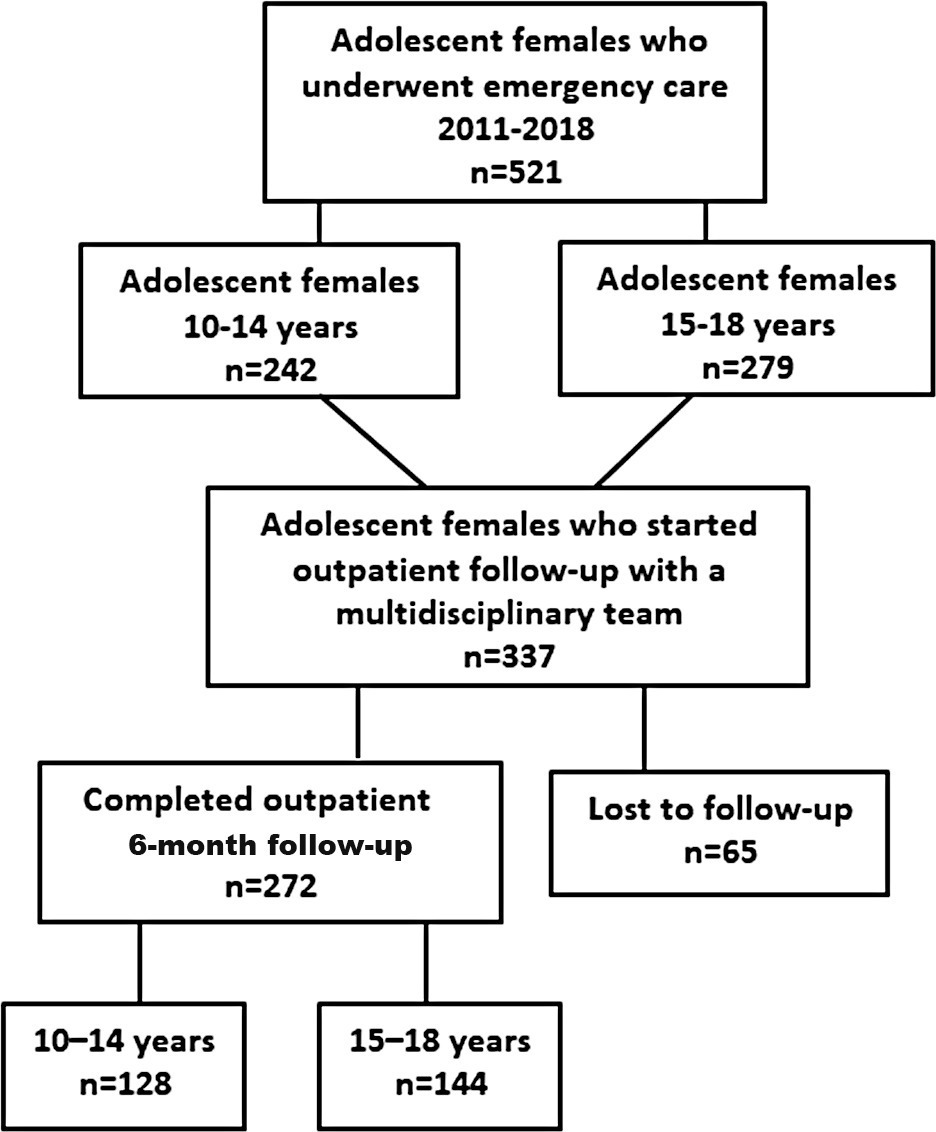Summary
Revista Brasileira de Ginecologia e Obstetrícia. 2022;44(7):667-677
To compare the sexual violence suffered by women in early and late adolescence, the reactions triggered after the aggression, and the care provided.
A retrospective study in which we reviewed the medical records of 521 female adolescents treated by a multidisciplinary team at a reference hospital in the city of Campinas, state of São Paulo, Brazil. We analyzed sociodemographic variables, and those pertainin to the characteristics of the episodes of violence, the emergency care, and the physical and psychological reactions observed during the follow-up. For the analysis, the sample was divided into groups of early (10 to 14 years) and late (15 to 18 years) adolescence. We used the Chi-squared/Fisher Exact, Mann-Whitney, and Kruskal-Wallis tests to compare the groups; the level of significance adopted was 5%.
The early group (n= 242) contained more adolescents who were enrolled in school (p< 0.001), suffered more daytime aggressions (p= 0.031), in their residences (p< 0.001), by an aggressor with whom they were acquainted (p< 0.001), had greater need of legal protection (p= 0.001), and took longer to seek care (p= 0.048). Feelings of guilt, shame, and the perception of violence were similar between the groups. In the late group (n= 279), there was greater consumption of alcohol during the aggression (p= 0,005); they received significantly more prophylaxis treatments; reported more physical symptoms (p= 0.033), sleep disorders (p= 0.003), symptoms of anxiety (p= 0.045), and feelings of anguish (p= 0.011); and had more prescriptions of psychotropics (p= 0.005). Only 52% completed the 6-month follow-up, with no differences between the groups.
The age groups showed differences in the characteristics of the episodes of violence; early adolescents took longer to seek help, and the late group presented more intense symptoms and psychological worsening during the follow-up. Measures of prevention and specific care aimed at this population are needed.

Summary
Revista Brasileira de Ginecologia e Obstetrícia. 2020;42(2):106-113
Genital injury has a forensic relevance after a sexual assault and it has been discussed and investigated among professionals who work in this field. To analyze the studies published in the last decades, the present review examines different factors that may influence this finding, first clarifying terms of the forensic field, such as the peculiarity of the legal medical examination, and the distinction of the terms “legal” and “anatomical” vagina. Finally, it analyses if it is possible that the existence of these injuries in victims explain the lack of consent in sexual contact, and to clarify the meaning of the absence of injuries.